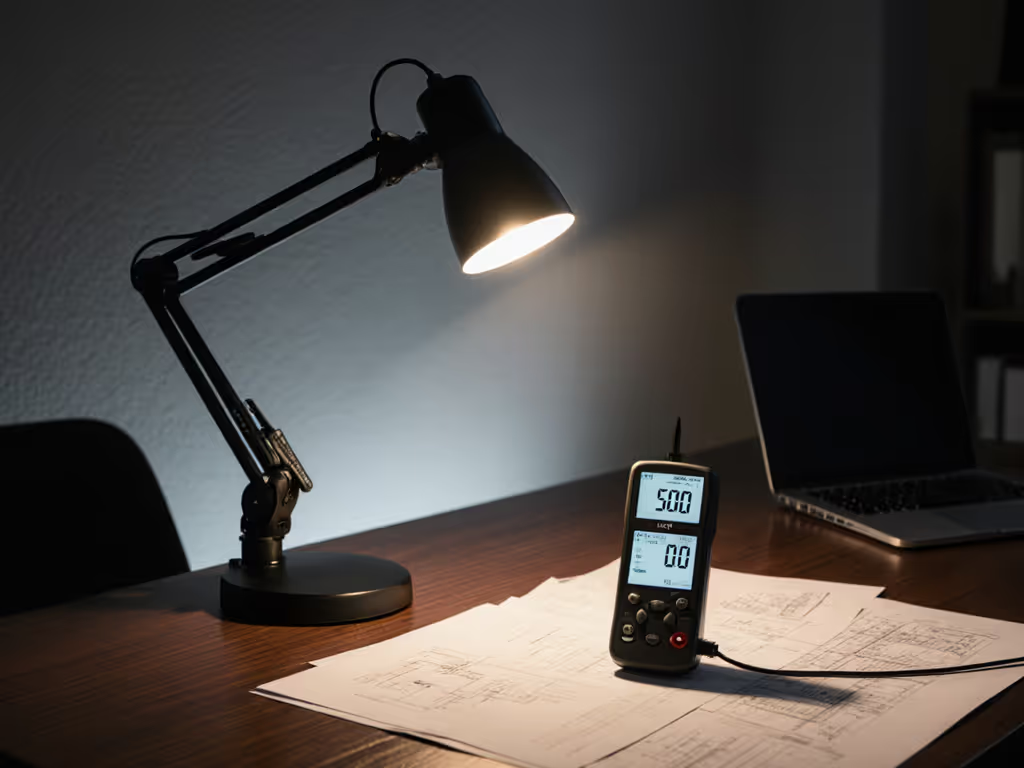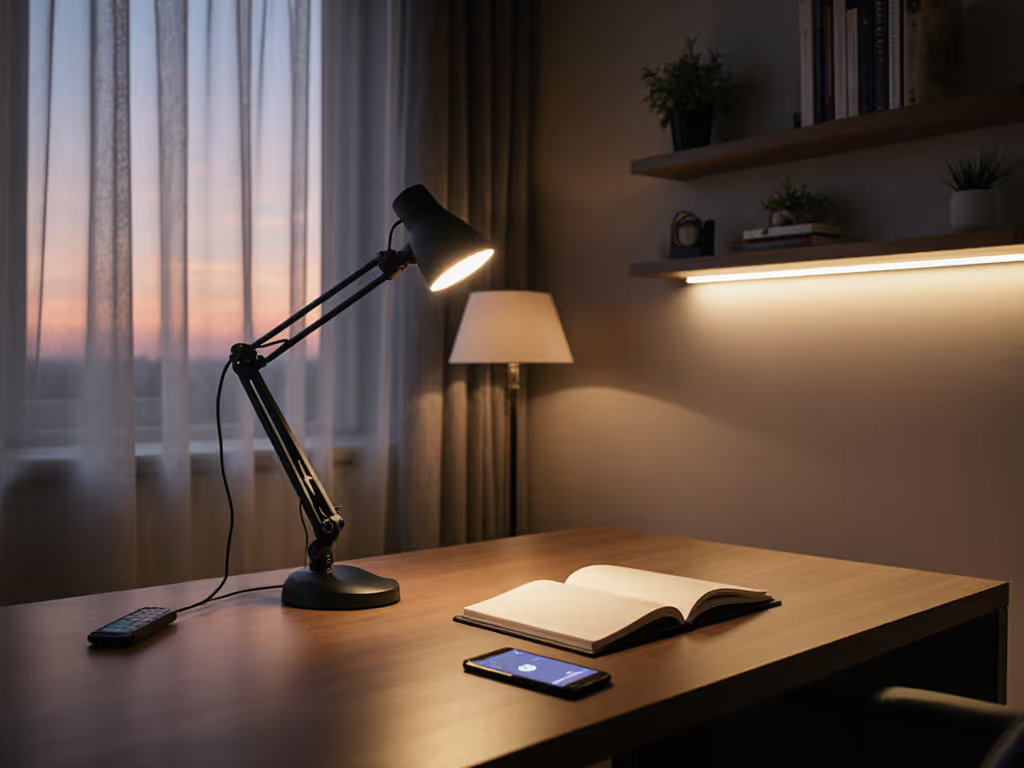
Desk Lamp Kelvin Guide: Match Light to Tasks & Time
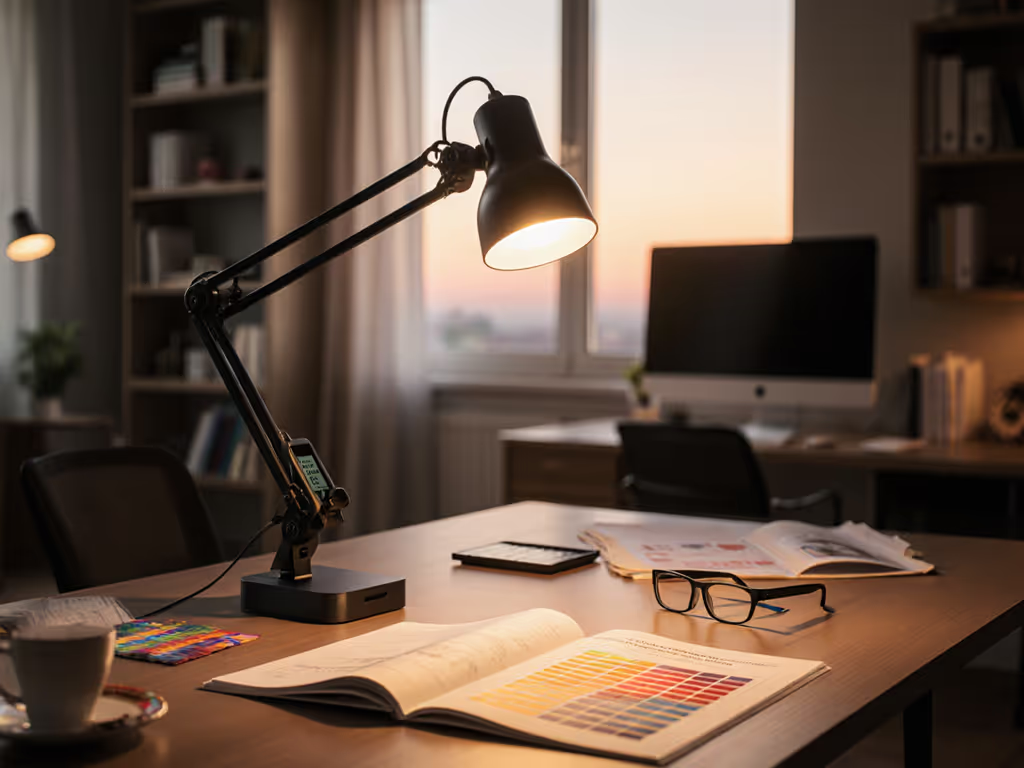
If you're struggling with eye strain or afternoon slumps at your desk, your desk lamp color temperature might be the culprit. Today's lighting Kelvin guide isn't just about technical specs (it's about creating a lighting system that works with your biology and tasks). After building simple frameworks for hundreds of home offices and shared workspaces, I've found most people make the same mistake: they treat all "white light" as equal, then suffer glare, fatigue, or sleep disruption as a result. Let's fix that with measurable, science-backed steps anyone can follow.
1. What Kelvin Actually Means (And Why Your Desk Needs This Number)
"Kelvin" (K) isn't just marketing jargon. It is a precise measurement of how warm (yellowish) or cool (bluish) your light appears. Think of it like nature's cycle: the warm glow of sunset sits around 2000-3000K, while midday sun hits 5000-6500K. This matters for your desk because:
- Lower Kelvin (2700K-3500K): Warm, yellowish light that eases eye strain during relaxed reading or evening work
- Mid Kelvin (3500K-4500K): Neutral white light that balances focus and comfort for general screen work
- Higher Kelvin (5000K-6500K): Cool, bluish light that boosts alertness for detailed tasks like coding or drafting
Unlike store packaging that just says "warm white" or "daylight," Kelvin gives you exact numbers to match to your specific needs. One client I worked with was amazed to discover her "perfect" 4000K lamp caused headaches during late work sessions, and switching to 3000K after sunset fixed it instantly.
Your biological clock responds to light temperature as much as brightness. Wrong Kelvin at the wrong time sabotages both productivity and sleep.
2. How Circadian Rhythms Dictate Your Best Desk Lighting
Circadian lighting isn't just a buzzword. It is physiology. Your eyes contain special cells that detect blue light (abundant in higher Kelvin temperatures) and signal your brain to suppress melatonin production. This is great at 9 AM when you need alertness, but disastrous at 9 PM when you're trying to wind down.
| Time of Day | Ideal Kelvin Range | Biological Effect |
|---|---|---|
| Morning (6-10 AM) | 5000K-6500K | Triggers serotonin release, increasing alertness |
| Daytime Work | 4000K-5000K | Maintains focus without harshness |
| Evening Work | 3000K-4000K | Reduces blue light exposure as sunset approaches |
| Late Night | Below 3000K | Minimizes sleep disruption for essential work |
I remember helping my sister set up her home office (she'd been using a harsh 6000K lamp until midnight, then wondering why she couldn't sleep). We started simple: map your workstyle, then dial lux and CCT. For intensity and placement targets, see our 500 lux desk lighting guide. Switching to 2700K after 8 PM transformed her rest.
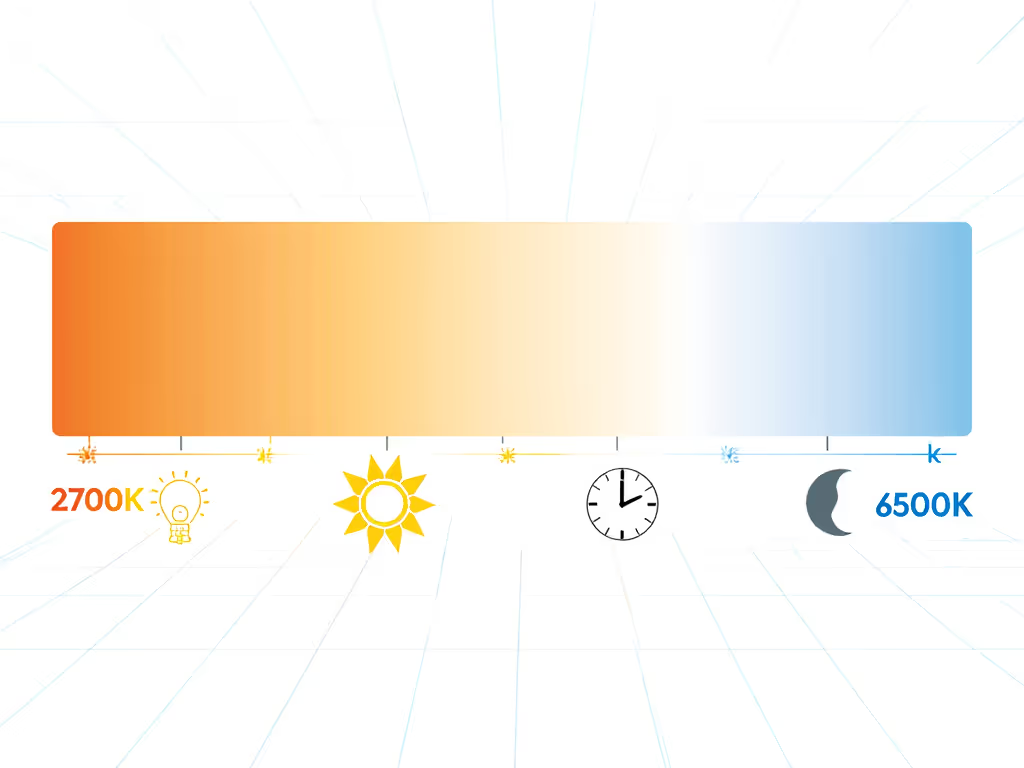
3. Task-Specific Kelvin Targets for Maximum Productivity
Not all desk work is equal. Your desk lamp color temperature should shift based on what you're doing:
Reading Physical Documents
- Ideal range: 2700K-3500K
- Why: Warm light reduces contrast between white paper and black text, easing eye strain during extended reading
- Pro tip: If you wear blue-light glasses, increase to 3500K to compensate for their yellow tint
Screen Work (General Office Tasks)
- Ideal range: 3500K-4500K
- Why: Neutral white maximizes screen readability without washing out colors or creating glare
- Warning: Anything above 5000K makes black text on white backgrounds "vibrate" for many users
Color-Critical Work (Design, Photo Editing)
- Ideal range: 5000K-5500K
- Why: Matches standard daylight viewing conditions for accurate color judgment
- Critical: Must pair with CRI 90+ for true color rendering (more on this shortly)
Precision Tasks (Engineering, Crafting)
- Ideal range: 4000K-5000K
- Why: Slightly cooler light increases visual acuity for fine details without harsh shadows
A client doing technical illustrations told me she'd been using a 3000K lamp for her drafting work. Switching to 4500K reduced her eye rubbing from hourly to almost never. Small desk spaces especially benefit from this precision: one change at a time.
4. Your Simple Framework for Adjustable Color Temperature
Adjustable color temperature lamps solve the "one Kelvin fits all" problem, but most people misuse them. Instead of randomly twisting dials, follow this framework:
- Identify your dominant work type (reading, screens, creative)
- Set your baseline Kelvin using the task-specific targets above
- Create time-based triggers (e.g., "At 7 PM, drop to 3000K")
- Add manual override for special tasks (e.g., switch to 5000K when reviewing color proofs)
Unlike static lamps, this approach lets you optimize for both productivity and wellbeing. I've seen remarkable results with users who implement just one time-based adjustment (like dropping to 3000K during evening video calls to appear more natural on camera).
The key isn't having every possible setting, but having the right few settings you'll actually use. For small desks with limited space, prioritize lamps with intuitive controls that let you jump between presets with one touch rather than fine-grained adjustments.
5. Matching Kelvin to Your Desk Reality (Without Overcomplicating)
Most lighting guides ignore your actual workspace constraints. Here's how to adapt Kelvin selection to real-world conditions:
For Small Desks
- Avoid high-Kelvin lamps (5000K+) that create glare on limited surfaces
- Choose task lighting lamps with focused beams to prevent light spill on monitors
- Opt for warm-dim (2700K-5000K) over full CCT adjustment to save space
For Shared Workspaces
- Set neutral baseline (4000K) that works for most tasks
- Use colored markers on dimmer rings (red for 3000K, blue for 5000K) so others understand settings
- Position lamps to avoid cross-glare between workstations
For Screen-Dominant Setups
- Never exceed 4500K directly in front of monitors
- Use asymmetric beams that light your desk but not the screen
- Enable "screen mode" on smart lamps (like BenQ's ZONA-Light technology) that dims center brightness
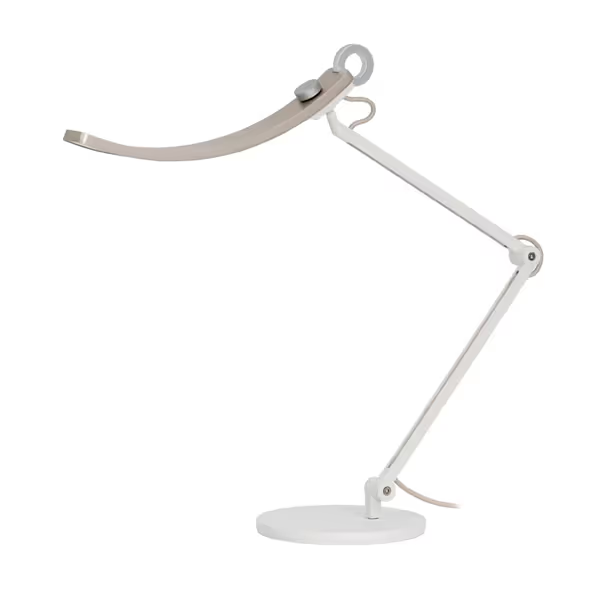
BenQ e-Reading Desk Lamp
Light Like a Pro: One Change at a Time
You don't need to overhaul your entire setup today. Start simple: measure your current desk lamp's Kelvin with a free phone app like Luxi, then compare it to your actual work patterns. If you're reading physical materials under 4000K light, or working late under 5000K, that's likely causing strain.
The most effective lighting systems follow this rule: clarity beats complexity. A simple framework that matches your specific tasks and schedule beats a feature-packed lamp you never adjust properly. Remember that lighting isn't about perfect specs (it is about creating conditions where you can work comfortably for hours without rubbing your eyes).
Try just one adjustment this week: if you work late, drop your Kelvin by 500-1000K after sunset. Notice how your eyes feel. Then add another change next week. One change at a time builds sustainable lighting habits that last.
Related Articles

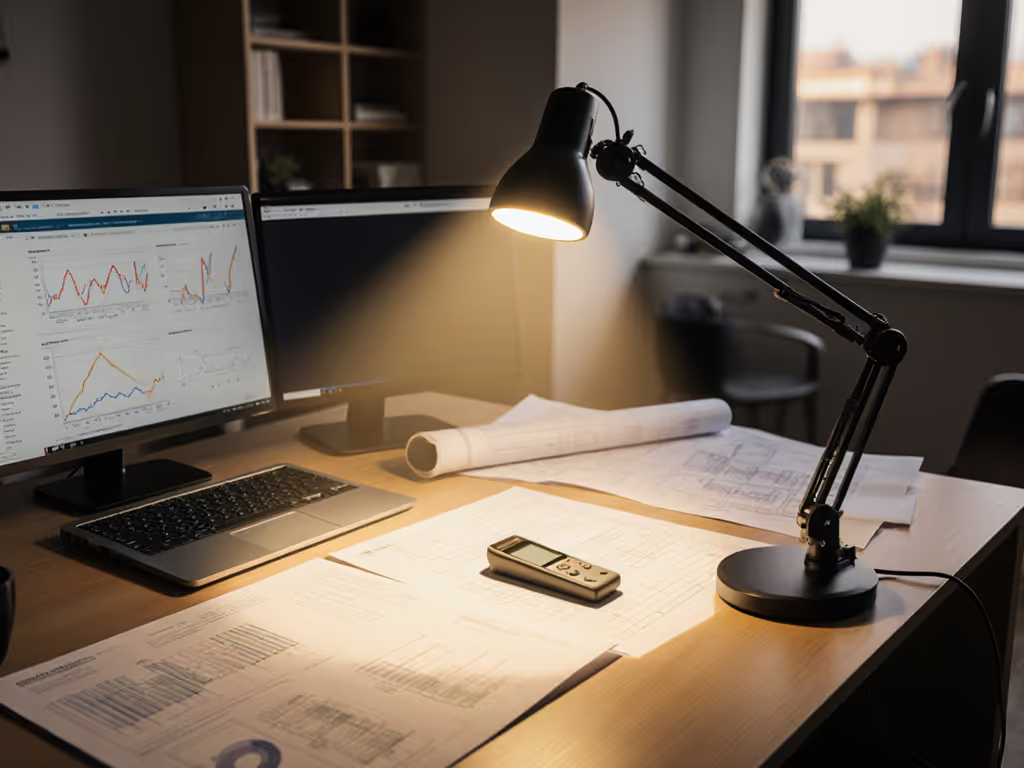
Desk Work Lamps: Science-Backed Productivity Boost
